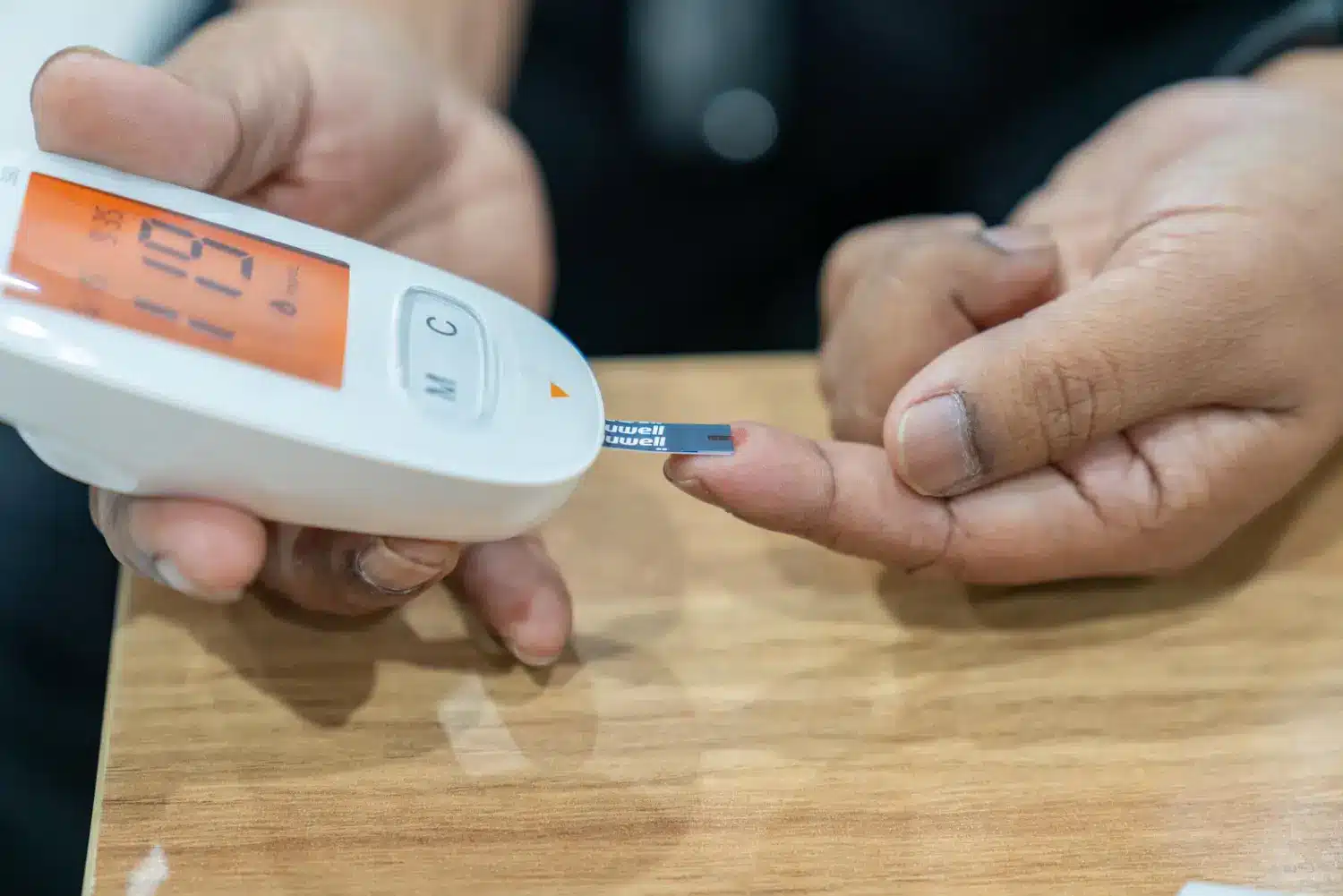Many people take multiple medications to manage their health, a practice known as polypharmacy. While it is becoming more common, using several medications at once can increase the risk of side effects, hospitalizations, and a lower quality of life, especially in older adults. That is why understanding how medicines interact is crucial when prescribing them together.
One medication that requires careful attention is Mounjaro (tirzepatide). Approved for type 2 diabetes and also used for weight management, Mounjaro works by slowing the stomach’s ability to empty. This can affect how some oral medications like birth control pills or thyroid medication are absorbed. Additionally, combining Mounjaro with insulin or sulfonylureas can increase the risk of low blood sugar.
In this article, we will look at which medications may interact with Mounjaro, why these interactions are important, and what both patients and clinicians should consider when combining treatments.
Key Takeaways
- Mounjaro (tirzepatide) can affect the absorption of oral medications by slowing gastric emptying, requiring careful consideration when prescribing alongside other drugs.
- Oral contraceptives, anticoagulants, antiepileptics, and antihypertensives are particularly vulnerable to altered absorption, which may impact their effectiveness.
- Combining Mounjaro with other hypoglycemic agents like insulin or sulfonylureas increases the risk of hypoglycemia, requiring dose adjustments and close monitoring.
- Overlapping incretin therapies (e.g., DPP-4 inhibitors, GLP-1 analogues) should be avoided due to similar mechanisms, which can intensify side effects.
- Proactive monitoring, medication adjustments, and patient education are essential to minimize risks and optimize treatment outcomes.
About: Medical Spa RX provides medical practices with premium products at the best prices. If you’re looking to buy Mounjaro online for your practice, the sales representatives at Medical Spa RX can give you guidance.
Pharmacologic Interactions: Mounjaro’s Effect on Gastric Emptying and Absorption of Oral Medications
Mounjaro indications include the treatment of type 2 diabetes management, and Zepbound (the same drug, tirzepatide) is approved for weight management. While both indications help manage metabolic health, Mounjaro’s mechanism of action requires careful attention. By slowing gastric emptying, the medication prolongs the time that food and liquids remain in the stomach before entering the small intestine.
This delay can affect the rate and extent of absorption for oral medications, potentially reducing their therapeutic effectiveness and necessitating clinical adjustments. Certain medications are more susceptible to these changes, including:

- Oral Contraceptives: Delayed absorption may compromise effectiveness, potentially reducing contraceptive efficacy. Patients may need to consider barrier methods or non-oral contraceptives for up to four weeks after starting Mounjaro or after each dose escalation.
- Anticoagulants: Medications like warfarin can be affected by changes in absorption. Patients taking anticoagulants should have their INR or coagulation parameters monitored closely, particularly when starting or adjusting Mounjaro dosage.
- Antiepileptics: Antiepileptic medications with narrow therapeutic windows, such as phenytoin, may require closer monitoring for effectiveness, though specific clinical evidence is needed.
- Antihypertensives: Delayed or incomplete absorption can impact blood pressure regulation, especially in patients already managing hypertension.
Because of these potential interactions, clinicians need to review a patient’s full medication profile before starting Mounjaro. Adjusting dosing schedules, modifying administration timing, or considering non-oral alternatives may be necessary to ensure optimal therapeutic outcomes.
Drugs with Enhanced Hypoglycaemia Risk When Combined with Mounjaro (Insulin, Sulfonylureas)
One of the most significant risks when combining Mounjaro with other glucose-lowering agents is the increased potential for hypoglycemia. Mounjaro already lowers blood glucose, so adding other medications with the same effect requires careful management. Common drugs that increase the risk of hypoglycemia when combined with Mounjaro include:
- Insulin: Both basal and bolus types can cause a more substantial glucose-lowering effect when taken with Mounjaro, increasing the risk of low blood sugar.
- Sulfonylureas: Drugs like glimepiride, glyburide, and glipizide stimulate insulin secretion and may intensify the glucose-lowering effect of Mounjaro.
- Glinides: Medications such as repaglinide and nateglinide also stimulate insulin release and can further reduce blood glucose levels.
Clinicians should closely monitor patients when combining Mounjaro with insulin or sulfonylureas, adjusting doses as necessary, and educating patients on recognizing early signs of low blood sugar, such as sweating, dizziness, or trembling. Having a clear plan for carbohydrate intake, such as using glucose tablets, ensures prompt management of hypoglycemia and supports safer combination therapy.
Avoidance or Caution: Overlapping Incretin Therapies, DPP-4 Inhibitors, GLP-1 Analogues
Since Mounjaro acts as a dual GIP and GLP-1 receptor agonist, using it alongside other incretin-based therapies should be done with caution or avoided altogether. Combining medications that work through similar pathways can increase gastrointestinal side effects and offer little additional benefit. Common overlapping therapies to avoid include:
- DPP-4 Inhibitors: These drugs prevent the breakdown of natural GLP-1 in the body, potentially amplifying side effects like nausea or vomiting without enhancing blood sugar control.
- GLP-1 Analogues: Medications like liraglutide or semaglutide can intensify nausea, vomiting, and delayed gastric emptying when used with Mounjaro.
- Other Experimental Incretin Therapies: Combining new or investigational incretin-based agents may further disrupt glucose balance and gastrointestinal motility, leading to potential adverse effects.
Clinicians should carefully review the patient’s medication list before starting Mounjaro, discontinue overlapping incretin drugs when necessary, and monitor for tolerance during the adjustment period. This helps ensure that therapy is both safe and effective.
Monitoring and Clinical Strategies to Mitigate Interaction Risks with Mounjaro
Because Mounjaro can delay gastric emptying and alter the absorption of oral medications, careful monitoring and proactive strategies are essential to maintain therapeutic outcomes. Clinicians should begin with a comprehensive review of the patient’s medication profile, especially for drugs with narrow therapeutic ranges or those requiring consistent absorption. Key strategies to reduce interaction risks include:

- Baseline Assessments: Establish laboratory values and clinical markers (e.g., coagulation profiles, seizure frequency, or blood pressure readings) before starting therapy.
- Ongoing Monitoring: Regularly track lab results and patient-reported outcomes to detect early signs of reduced efficacy or adverse effects.
- Medication Adjustments: Modify dosing schedules, alter administration timing, or consider alternative formulations such as injectables or transdermal systems if oral absorption is affected.
- Patient Education: Encourage patients to report promptly any changes in symptom control or unexpected side effects.
Conclusion
When prescribing Mounjaro, understanding its interaction profile is crucial for safe and effective treatment. Its impact on gastric emptying can alter how oral medications are absorbed, and combining it with other hypoglycemic drugs (e.g., insulin or sulfonylureas) raises the risk of hypoglycemia. Therapies that overlap in mechanism, such as DPP-4 inhibitors and GLP-1 analogues, should be used with caution or avoided.
Through diligent monitoring, medication review, patient education, and strategic clinical planning, many of these interaction risks can be managed. Prescribers must remain vigilant about all medications a patient uses and adjust therapy as necessary to ensure optimal outcomes without compromising safety.
FAQs
1. Can I take Mounjaro with insulin?
Yes, but combining Mounjaro with insulin increases hypoglycemia risk. Patients need dose reductions and close monitoring.
2. Does Mounjaro affect birth control pills?
Yes, delayed stomach emptying with Mounjaro may reduce absorption of oral contraceptives. Consider non-oral alternatives or backup methods for 4 weeks after initiation or dose escalation.
3. Is it safe to use Mounjaro with GLP-1 analogues?
No, avoid using Mounjaro with other GLP-1 analogues or DPP-4 inhibitors due to overlapping mechanisms and heightened side-effect risks.
4. Should I stop all oral medications when starting Mounjaro?
Not necessarily. Review all oral medications with your doctor and adjust timing or dosage if absorption may be affected.
5. What kind of monitoring does Mounjaro require?
Regular glucose checks, review of all medications, kidney/liver function tests, and gastrointestinal symptom assessments.
References
Delara M, Murray L, Jafari B, et al. Prevalence and factors associated with polypharmacy: a systematic review and meta-analysis. BMC Geriatrics. 2022;22(1). doi:10.1186/s12877-022-03279-x
Omar RC. “Managing Obesity with Mounjaro: A Brief Literature Review.” Biomedical Journal of Scientific & Technical Research. 2023;52(2). doi:10.26717/bjstr.2023.52.008226





















